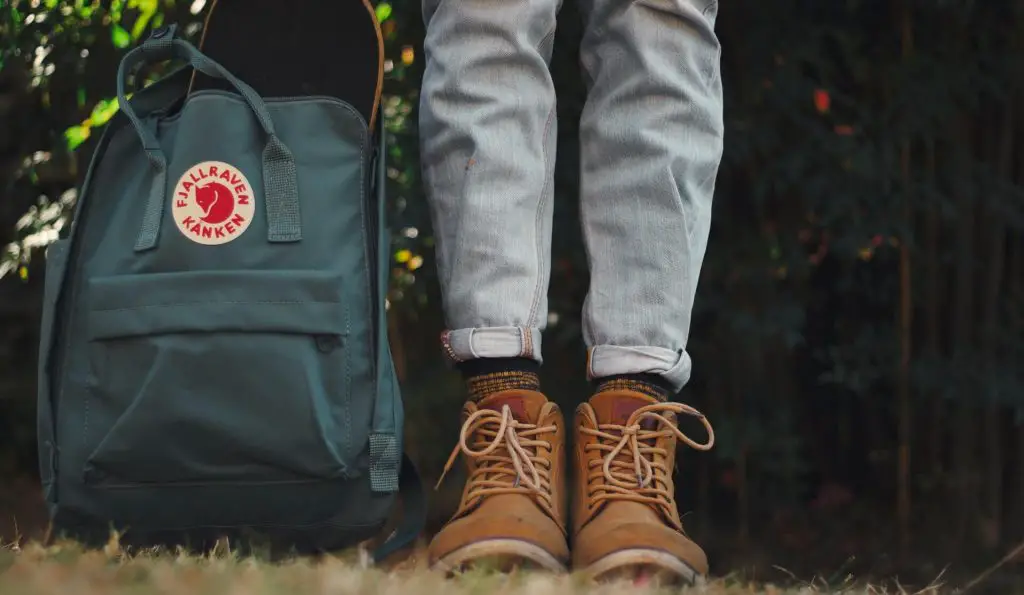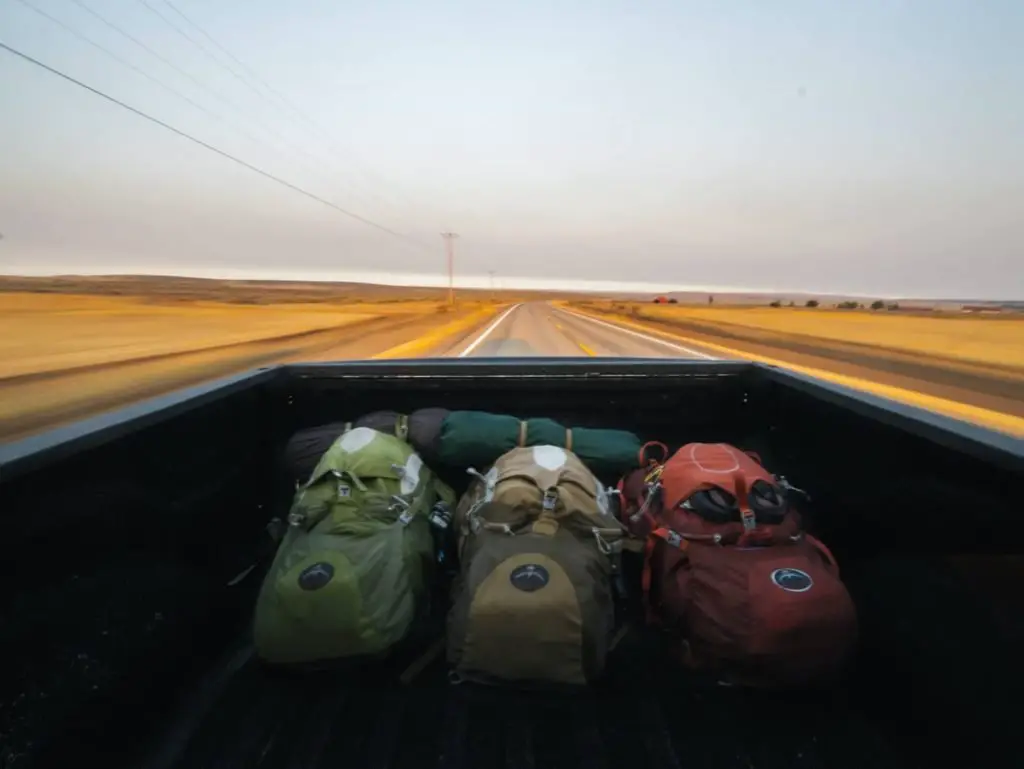
When you’re out on the hiking trail you will likely see a variety of hiking backpacks. From packs ranging from the packs you would see at school to large camping backpacks packed to the brim carrying all kinds of hiking gear. Hiking backpacks can get pricey and there are so many different options, so can you just hike with a regular backpack?
Choosing the right hiking backpack can make a massive difference in your comfort, however, you can use a regular backpack on short day hikes. For any long day hikes, weekend trips, or backpacking trips you definitely need a hiking backpack as it will allow you to carry all necessary gear and be able to distribute the pack weight evenly.
When I started hiking, I just used an old black Jansport bookbag I had laying around from high school. The straps were thin and there were only two pockets, but it carried what I needed and I did not notice too much discomfort. At the time, I was only hiking short local hikes, so it worked well for me. It wasn’t until I took the same bag on an all-day epic 16-mile hike to Half Dome in Yosemite where I realized that a regular backpack wouldn’t do. So how do you know when you need a regular backpack and when you need a hiking backpack? Below we will go over key considerations and questions to ask yourself before you decide on your next pack.
How do I choose a backpack for a day hike?

Distance
In order to help pick the right pack for a day hike, there are a few things to consider. The first is what the total distance and difficulty of your hike will be. This is important because the longer the hike the more any kind of discomfort you feel will compound. Regular backpacks will work just fine on a short hike because you won’t notice too much discomfort and will still be able to enjoy your hike. However, imagine thin straps pulling down on your shoulders and the bulge of water bottles bouncing on your back repeatedly over eight long miles. That would get old very quickly.
If you are hiking anything over five miles, you should definitely look into buying a proper hiking backpack. Good hiking backpacks will have padded shoulder straps and a pouch specifically for a water bladder. These two things will make a world of a difference as you will likely not even notice your backpack and be able to focus on your hike and not your bag.
How big of a backpack do I need for a day hike?
The next important thing to consider is how big of a backpack do you need? Hiking backpacks will have a gear capacity rating listed in Liters. A good size for shorter day hikes would be a pack with at least 12 Liters. This will give you enough space to carry your ten essentials, snacks, food, and water. The longer your hike, the more food, and water you will need to carry, so consider looking at backpacks with at least 20 Liters. These packs are slightly larger, but not too large where you are carrying unnecessary pack weight.
Features
How Many Pouches does the Backpack Have?
Making the switch from a regular backpack to a hiking backpack will present you with many additional features. The first feature to consider is how many pouches are in your bag. A normal backpack will generally only have about two pouches, the main pouch and a smaller front pouch, but in a hiking backpack, there will also be front-loading pouches, side pouches for snacks, and items you need quickly, and even a pouch just for your water bladder. Hiking backpacks will allow you to be more organized and have compartments for all of your hiking gear and snacks.
Adjustable Straps
The next feature to look at is the adjustable straps, some day-packs have waist straps to help transfer the weight around your waist more comfortably. Some packs also have shoulder strap adjustments to place the weight more on your shoulders. This allows you to distribute and adjust the weight throughout your hike so your shoulders aren’t super sore after your hike.
Material and Breathability
Another important factor to consider is material and breathability. The material of the shoulder straps is very important. There will be packs with breathable mesh material. This is a great feature as it will allow more air to flow to your shoulders and back and not leave your straps and pack soaked in sweat. Another major thing to look out for is the amount of padding on the shoulder straps and on the back. The amount of cushion here makes a huge difference on if your pack feels like a cloud or if it feels like a boulder against your body.
Frame Size and Pack Weight
When choosing packs there are many sizes, so something important to consider is the frame size. The frame size is important since it will contour comfortably against your body. If you choose a backpack with a frame that is too big then the bag will swing from side to side. There will be backpacks with frame sizes for smaller bodies and for larger bodies.
The last feature to consider when picking a hiking bag is the pack weight. While more features and volume is great, this also comes at a cost. The larger packs will weigh more, which will be more weight you have to carry on your hike.
What kind of backpack will you bring in hiking?

Small Pack 10L to 20L
For any day hikes under five miles the ideal pack size to bring is between 10L and 20L. This pack size will provide enough space for your water, snacks, food, and any other hiking essentials you need. The smaller size will be an added bonus as the pack will be lighter and there won’t be enough space which will make you be more mindful of the gear you are bringing.
Medium Pack 20L to 36L
The next size up is a medium pack which ranges from 20 Liters to 36 Liters. These packs are slightly larger than the smaller packs and will likely have additional pouches and waist straps. You should consider a medium-size pack for any day hikes longer than five miles and opt for the larger packs for shorter backpacking trips. The larger packs will generally have a top pouch added on top of a backpack, straps to hold a tent and a sleeping pad.
Large Pack 36L and Beyond
Last but not least is the largest packs of the bunch. These packs will be massive compared to the smaller day packs. These packs will typically have a rigid framing system with external frames or internal frames, though these days internal framing system is much more popular as it is lighter and less bulky. These larger packs should be reserved for backpacking trips longer than two days. They will provide you with enough space for your day’s hiking gear, food, water, and all of the camping gear you need to carry.

